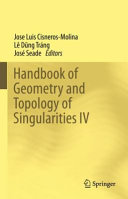

Most ebook files are in PDF format, so you can easily read them using various software such as Foxit Reader or directly on the Google Chrome browser.
Some ebook files are released by publishers in other formats such as .awz, .mobi, .epub, .fb2, etc. You may need to install specific software to read these formats on mobile/PC, such as Calibre.
Please read the tutorial at this link: https://ebookbell.com/faq
We offer FREE conversion to the popular formats you request; however, this may take some time. Therefore, right after payment, please email us, and we will try to provide the service as quickly as possible.
For some exceptional file formats or broken links (if any), please refrain from opening any disputes. Instead, email us first, and we will try to assist within a maximum of 6 hours.
EbookBell Team

0.0
0 reviewsMathematics Subject Classification: 14BXX Local theory in algebraic geometry • 32SXX Complex singularities • 58KXX Theory of singularities and catastrophe theory
This is the fourth volume of the Handbook of Geometry and Topology of Singularities, a series that aims to provide an accessible account of the state of the art of the subject, its frontiers, and its interactions with other areas of research.
This volume consists of twelve chapters which provide an in-depth and reader-friendly survey of various important aspects of singularity theory. Some of these complement topics previously explored in volumes I to III. Amongst the topics studied in this volume are the Nash blow up, the space of arcs in algebraic varieties, determinantal singularities, Lipschitz geometry, indices of vector fields and 1-forms, motivic characteristic classes, the Hilbert-Samuel multiplicity and comparison theorems that spring from the classical De Rham complex.
Singularities are ubiquitous in mathematics and science in general. Singularity theory is a crucible where different types of mathematical problems interact, surprising connections are born and simple questions lead to ideas which resonate in other subjects. Authored by world experts, the various contributions deal with both classical material and modern developments, covering a wide range of topics which are linked to each other in fundamental ways.
The book is addressed to graduate students and newcomers to the theory, as well as to specialists who can use it as a guidebook.